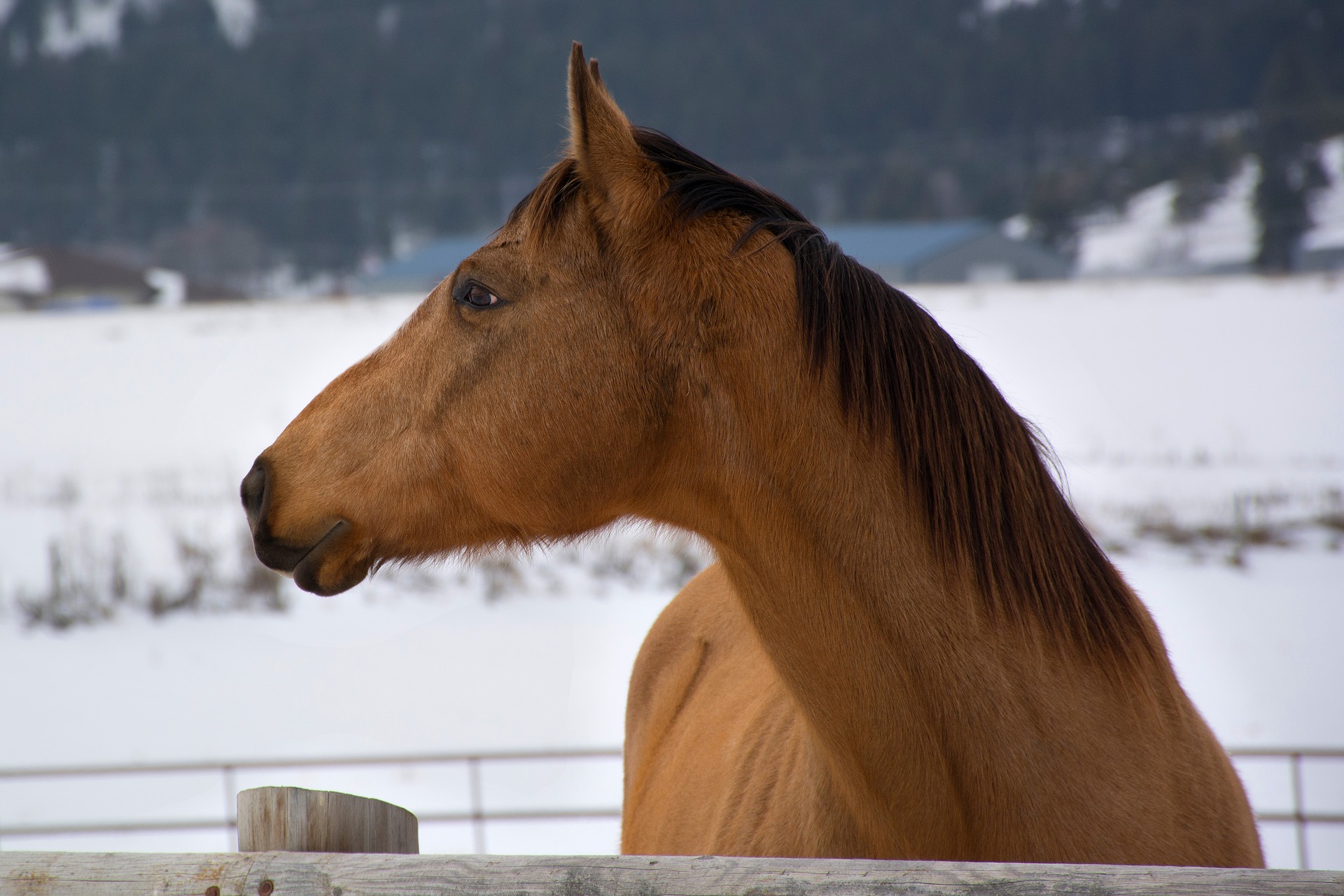
With all your winter-wear, your lotions, vitamins, flu shots, your heated gym, office and home, you’re living in the lap of luxury compared to your horses in the winter. Even in regions where temperatures remain moderate throughout the winter, horses suffer from ailments similar to those that plague their owners,. These include runny noses, chapped skin, the flu and even cabin fever.
The irony is that many of the horses’ winter-related problems are initiated or exacerbated by their owners’ good intentions. In trying to keep their horses as warm and dry as the hairless human deems comfortable, they drape naturally insulated animals in blankets, seal them up in airtight barns and stuff them with scoop after scoop of grain. Indeed, most of the wintertime woes that plague horses could be prevented with some simple management changes. Consider these seasonal troublemakers and some winterizing tactics that work with horse nature, not against it.
Equine Respiratory Woes in Winter
Good air quality is essential to the health of a stabled horse no matter what the season of year. But in winter, when your inclination is to cover windows and vents, disconnect fans and shut barn doors, inadequate ventilation can cause serious respiratory problems.
Research has shown that by the time ammonia buildup in stalls reaches levels that we can smell, the gas is already sufficient to damage horses’ lungs. Dust and mold, too, can initiate or aggravate allergies–most notably heaves–and irritate respiratory membranes, making horses more susceptible to respiratory infections and bronchitis.
Be fastidious in your stable management, keeping stalls clean and dry with, if possible, daily cleaning and airing out. Passive ventilation–floor- and soffit-level vents that operate on the hot-air-rises principle–provides a practically draft-free flow of fresh air. But if your barn has no vents other than doors and windows, experiment with combinations of openings to let in air without blasting the inhabitants with wind and precipitation.
A properly installed mechanical system should change the interior air without causing drafts. Cool fresh air may make you shiver, but it’s much healthier for stabled horses than stagnant, dust- and fume-filled air trapped unchanged within a sealed building.
A horse becomes chilled when he loses body heat too quickly. This most often happens immediately after exercise on a windy and/or cold, low-humidity day. Without adequate cooldown after exertion, the mechanisms for dispersing body heat do not reverse quickly enough into the heat-conserving mode-hair coat dry, erect and fluffy; superficial blood circulation curtailed. This rapid heat loss drops the horse’s body temperature to below normal and knocks a chink in his immune defenses.
A good rule of thumb for cold-weather riding is to spend twice as long on cooldown following sweat-making exertion as you would during fair weather. Then cover him with a cooler or quarter sheet to retain body heat until his heat-conserving mechanisms kick in. A lofting layer of straw between the blanket and wet skin encourages air circulation and reduces clamminess.
Wintertime Equine Skin Conditions
Winter’s increased humidity and precipitation added to well-insulated (by nature or nurture) skin create an ideal breeding ground for the agents of skin disease. The following conditions generally afflict horses when they’re at their woolliest:
- Rainrot–crusted, painful, infectious skin inflammation, caused by Dermatophilus organisms and triggered when small to moderate amounts of moisture, insufficient to thoroughly cleanse, fall onto a dirty, neglected coat; scabbing and hair loss often follow rain runoff patterns.
- Bed itch–dermatitis producing crusty, sore spots on parts of the body that make contact with soiled bedding, typically the thighs and elbows.
- Ringworm–a contagious fungal infection causing scaling of skin and hair loss in roughly circular patches.
- Scratches–scabby and/or oozing skin inflammation on the back of the pastern above the heels, caused by overexposure to moisture and loss of protective skin oils.
- Lice–blood-sucking parasites that thrive in the thick, unkempt coats of unthrifty, stressed horses; associated itch drives horses to rub and bite their skin raw; coat is matted with dandruff and slightly waxy to the touch.
Preventing skin problems in winter is a matter of cleanliness and diligence. Blankets, tack, grooming equipment and common living quarters can spread the contagious conditions or repeatedly re-infect the same horse unless you eliminate these infectious agents. Consult with your veterinarian about disinfectants and other treatment strategies if one or more of your horses comes down with skin crud. Keep your horses, the stalls and all the equipment that comes in contact with them clean and dry, and you’ll avoid the vast majority of seasonal skin disorders.
Don’t miss out! With the free weekly EQUUS newsletter, you’ll get the latest horse health information delivered right to your in basket! If you’re not already receiving the EQUUS newsletter, click here to sign up. It’s *free*!









